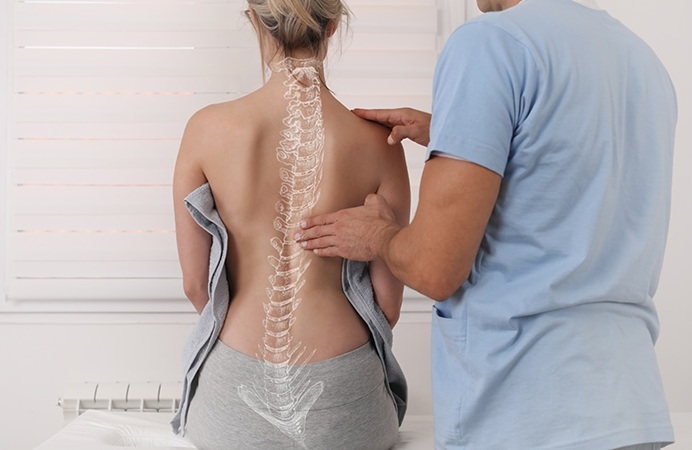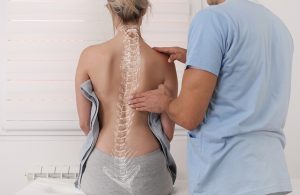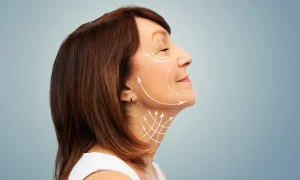Spinal curvature, such as scoliosis, can feel overwhelming when it affects a growing adolescent. The teenage years are already challenging, and the thought of managing a condition that could impact their posture, confidence, and long-term health often adds a layer of worry. But the good news is that modern approaches to spinal health offer many effective ways to manage and even improve spinal curvature.
Early Diagnosis Makes All the Difference
When it comes to spinal curvature, timing is everything. Early detection allows for less invasive treatments and better outcomes. Keeping an eye out for subtle changes in posture, such as uneven shoulders or a noticeable curve when your child bends forward, can provide critical clues.
Regular check-ups with your GP or paediatrician are essential, as they can monitor growth and refer you to a specialist if needed. If scoliosis is suspected, imaging tests such as X-rays provide a clear picture of the spine’s alignment and the degree of curvature. Catching the issue early means you can intervene before it progresses, minimising long-term effects.
Customised Physiotherapy Builds Strength and Stability
A tailored physiotherapy program is a cornerstone of managing spinal curvature. Unlike general exercise routines, physiotherapy focuses on building core strength, improving posture, and increasing flexibility, all while addressing the specific needs of an adolescent with scoliosis.
These programs often include exercises to target imbalances in the muscles surrounding the spine, which can help reduce discomfort and support proper alignment. Physiotherapists trained in scoliosis management can also teach techniques to ease tension in overworked muscles.
The Role of Bracing During Growth Spurts
For adolescents whose spinal curvature is still developing, bracing can be an incredibly effective tool. A modern scoliosis back brace is far more advanced and comfortable than its predecessors, designed to discreetly fit under clothing and adapt to a teenager’s active lifestyle.
Bracing is most commonly recommended for moderate curves that are likely to worsen during a growth spurt. The goal is not to straighten the spine entirely but to prevent the curve from worsening until the growth plates close. With the right brace and consistent use, this non-invasive approach often avoids the need for surgery.
Encouraging Active Lifestyles
While structured treatments are crucial, maintaining an active lifestyle plays an equally important role in managing spinal health. Activities such as swimming, yoga, and pilates are particularly beneficial because they build strength and flexibility without placing undue stress on the spine.
Swimming, for instance, supports the body’s weight while encouraging balanced movement, making it ideal for adolescents with scoliosis. Beyond physical benefits, staying active also boosts mental well-being and confidence.
When Surgery Becomes Necessary
In some cases, despite the best efforts with non-invasive treatments, surgery may become necessary to correct severe spinal curvature. While this can feel like an intimidating prospect, advances in surgical techniques have made procedures such as spinal fusion highly effective and relatively safe.
Recovery times have improved significantly, and many kids return to their usual activities within months. Surgery is usually only considered when the curve exceeds a certain threshold and is likely to cause complications in adulthood, such as chronic back pain or reduced lung function.
The Importance of Emotional Support
Managing spinal curvature is both a physical and emotional journey. Kids often worry about how their condition might affect their appearance or ability to participate in sports and social activities. Open communication within the family can make a huge difference, creating a safe space for them to share their feelings.
Involving them in decisions about their treatment plan fosters a sense of control and reduces anxiety. Support groups, both in person and online, can also connect teens with others going through similar experiences, offering reassurance that they’re not alone.
Holistic Care Through Nutrition and Posture Awareness
Nutrition is another often overlooked factor in spinal health. A diet rich in calcium, vitamin D, and other essential nutrients for bone growth supports the structural integrity of the spine. Ensuring your child receives proper nutrition during their growth years lays the foundation for long-term spinal health.
Additionally, simple habits such as maintaining good posture during study sessions, avoiding heavy backpacks, and taking regular breaks from screens can prevent unnecessary strain on the spine. These small but meaningful changes can reinforce other treatment efforts and promote overall well-being.
Conclusion
While the prospect of managing spinal curvature can initially seem daunting, it’s important to remember that you don’t have to face it alone. With advancements in medical care and a proactive approach, there are more tools than ever to help your child maintain healthy, active lives.






More Stories
Enhance Your Culinary Experience: Pairing Cannabis Strains with Local Flavors
How to Choose the Right Cheek Filler and Factors to Consider?
How can you use 11oysters candy to create a romantic moment?